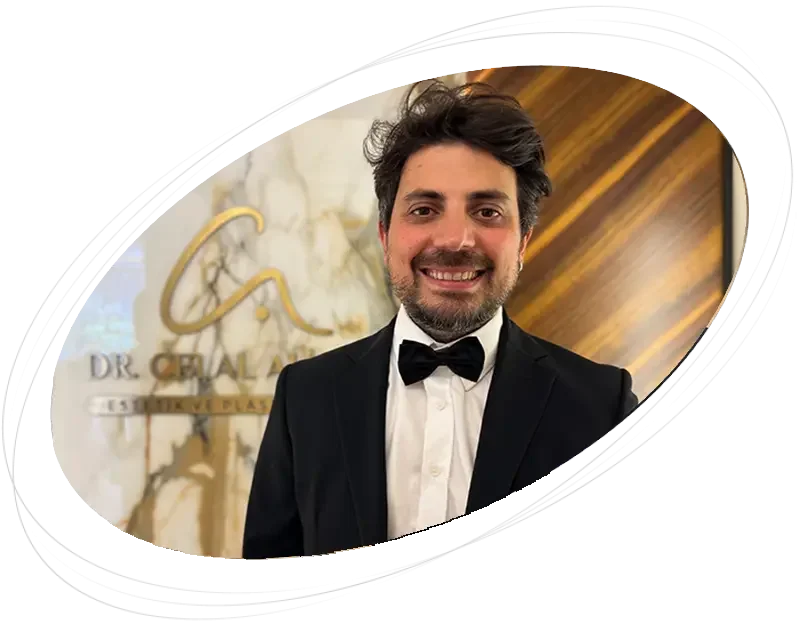Patients who will have an aesthetic operation should be very careful and knowledgeable in choosing physicians who are experts in the subject according to the operation they will have. The specialty area of plastic surgery is not “Aesthetic Surgery”. Its correct use is Plastic, Reconstructive and Aesthetic Surgery. This area of expertise is not limited to aesthetic operations. The word plastic means “shape” and the word Reconstructive means “reconstruction”.
The main operation areas of Aesthetic Surgery are as follows;
The treatment area of Aesthetic Surgery is different from Reconstructive Surgery. Aesthetic Surgery is performed to improve body image. Aesthetic Surgery is aimed more at aesthetic problems than medical problems. The training and specialization of the physicians who perform the operations of the patients should be carefully investigated. Otherwise, patients may encounter serious health problems.
Reconstructive Surgery
Reconstructive Surgery provides the correction of congenital or acquired tissue deficiencies or functional disorders on the body surface. Main areas of interest of reconstructive surgery:
Although Reconstructive Surgery and Aesthetic Surgery are different in terms of treatment areas and forms, they should be evaluated as a whole. Doctors who treat these two areas are called “Aesthetic Surgeons”, “Plastic Surgeons” or “Aesthetic plastic surgeons”. The correct usage is “Plastic, Reconstructive and Aesthetic Surgeon”. They have the ability to perform any of the above-mentioned treatments.
Are facial plastic surgeon, Medical Aesthetician, Esthetician the same thing?
Facial plastic surgeon is a term used by otolaryngologists who are interested in aesthetic surgery and is not currently accepted as a specialty in our country.
Medical aesthetic physician, on the other hand, is a title that the Ministry of Health provides to all physicians with a certificate without requiring expertise, and today this certificate cannot be obtained anymore. Physicians who have previously obtained this certificate can only use this title. They have the competence to perform non-surgical aesthetic procedures.
Esthetician is a title that can be used with a document taken from a course under the supervision of the Ministry of National Education. Estheticians are not physicians and there is no requirement to be a university graduate. They have the competence to perform procedures such as skin care and laser epilation under the supervision of a physician.
Plastic surgeons should not be confused with this professional group. Plastic surgeons are doctors who are authorized to operate and who apply treatment to repair serious physical ailments. The medical aesthetic physician or esthetician does not have the authority and competence to perform these treatments.
Estheticians do not even have to be university graduates. The title of facial plastic surgery is still a matter of debate. However, it should be known that the physicians using this title are “Ear Nose Throat” doctors and they have the competence to perform surgery on the face and neck region.
Frequently Asked Questions About Aesthetic Surgery by Patients
Are Aesthetic and Plastic Surgery the Same?
Plastic, Reconstructive and Aesthetic Surgery is the correct way of use. It is only a part of the field of Aesthetic Surgery and can be defined as the improvement of the parts of the body that the person feels visually uncomfortable and wants to be corrected in line with the patient’s wishes.
What Diseases Does Plastic Surgeon Treat?
Plastic Surgeon treats congenital or acquired diseases, traumas, disorders and defects in the person’s body and appearance.
Will Plastic Surgery Take Me?
Many moles of different sizes are seen in different parts of the body of each person. In general, most of these moles are benign moles. Benign moles do not need to be removed, but they can be removed if patients complain aesthetically. Patients can apply to a dermatologist and plastic surgeon when they think that it is a malignant mole. The general thought after the mole removal operation is that there will be no scars in the area where the mole was taken, but this situation changes according to the condition of the mole and the skin. After the mole removal procedure, there is a scar, even if it is invisible. Aesthetic surgery works very meticulously in this regard. In addition, benign moles do not turn into malignant moles after removal!
Is There Any Scar After Aesthetic Surgery?
If full thickness damage occurs on the skin as a result of accidents, injuries and burns, scars remain. In milder cases, there is no scarring due to the ability of the upper layer of the skin to renew itself. Therefore, it is inevitable to leave scars after the surgery. But plastic surgeons work very meticulously in plastic surgery. In nose aesthetics, eyelid aesthetics, face lift surgeries, prominent ear surgeries, the scars are tried to be hidden as much as possible as a result of the meticulous work of the surgeons. It is natural to have scars after every surgery, but plastic surgery works as meticulously as possible to ensure that the scar is not visible as much as possible.

Dr. Celal Alioğlu, MD is a plastic and aesthetic surgery specialist. He works in his own private clinic. An active member of national and international professional associations, Dr. Alioğlu is in constant communication with his colleagues and closely follows the latest developments in his field. He also regularly attends national and international congress courses to increase his knowledge and experience.
More About Dr. Celal+